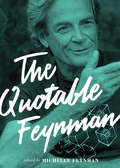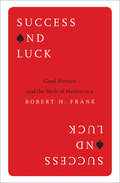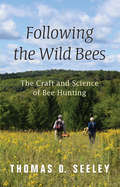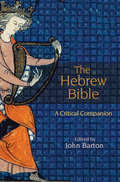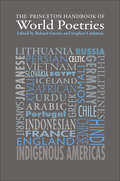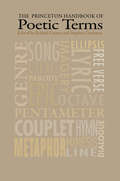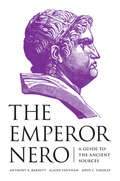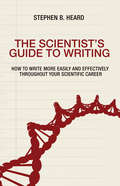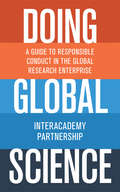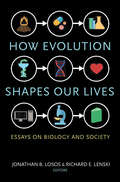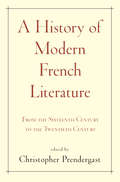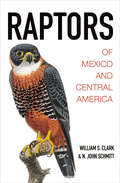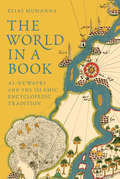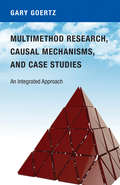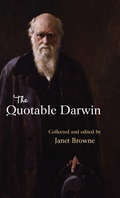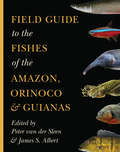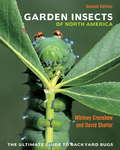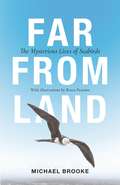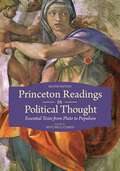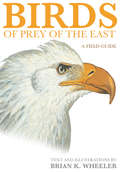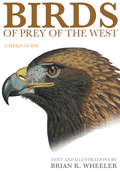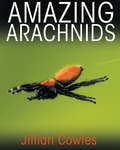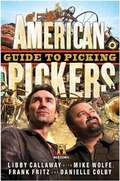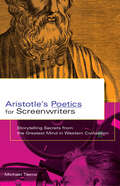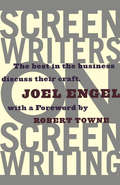- Table View
- List View
The Quotable Feynman
by Yo-Yo Ma Brian Cox Richard P. Feynman Michelle Feynman"Some people say, 'How can you live without knowing?' I do not know what they mean. I always live without knowing. That is easy. How you get to know is what I want to know."--Richard P. FeynmanNobel Prize-winning physicist Richard P. Feynman (1918-88) was that rarest of creatures--a towering scientific genius who could make himself understood by anyone and who became as famous for the wit and wisdom of his popular lectures and writings as for his fundamental contributions to science. The Quotable Feynman is a treasure-trove of this revered and beloved scientist's most profound, provocative, humorous, and memorable quotations on a wide range of subjects.Carefully selected by Richard Feynman's daughter, Michelle Feynman, from his spoken and written legacy, including interviews, lectures, letters, articles, and books, the quotations are arranged under two dozen topics--from art, childhood, discovery, family, imagination, and humor to mathematics, politics, science, religion, and uncertainty. These brief passages--about 500 in all--vividly demonstrate Feynman's astonishing yet playful intelligence, and his almost constitutional inability to be anything other than unconventional, engaging, and inspiring. The result is a unique, illuminating, and enjoyable portrait of Feynman's life and thought that will be cherished by his fans at the same time that it provides an ideal introduction to Feynman for readers new to this intriguing and important thinker.The book features a foreword in which physicist Brian Cox pays tribute to Feynman and describes how his words reveal his particular genius, a piece in which cellist Yo-Yo Ma shares his memories of Feynman and reflects on his enduring appeal, and a personal preface by Michelle Feynman. It also includes some previously unpublished quotations, a chronology of Richard Feynman's life, some twenty photos of Feynman, and a section of memorable quotations about Feynman from other notable figures.Features:Approximately 500 quotations, some of them previously unpublished, arranged by topicA foreword by Brian Cox, reflections by Yo-Yo Ma, and a preface by Michelle FeynmanA chronology of Feynman's lifeSome twenty photos of FeynmanA section of quotations about Feynman from other notable figuresSome notable quotations of Richard P. Feynman:"The thing that doesn't fit is the most interesting.""Thinking is nothing but talking to yourself inside.""It is wonderful if you can find something you love to do in your youth which is big enough to sustain your interest through all your adult life. Because, whatever it is, if you do it well enough (and you will, if you truly love it), people will pay you to do what you want to do anyway.""I'd hate to die twice. It's so boring."
Success and Luck: Good Fortune and the Myth of Meritocracy
by Robert H. FrankHow important is luck in economic success? No question more reliably divides conservatives from liberals. As conservatives correctly observe, people who amass great fortunes are almost always talented and hardworking. But liberals are also correct to note that countless others have those same qualities yet never earn much. In recent years, social scientists have discovered that chance plays a much larger role in important life outcomes than most people imagine. In Success and Luck, bestselling author and New York Times economics columnist Robert Frank explores the surprising implications of those findings to show why the rich underestimate the importance of luck in success--and why that hurts everyone, even the wealthy.Frank describes how, in a world increasingly dominated by winner-take-all markets, chance opportunities and trivial initial advantages often translate into much larger ones--and enormous income differences--over time; how false beliefs about luck persist, despite compelling evidence against them; and how myths about personal success and luck shape individual and political choices in harmful ways.But, Frank argues, we could decrease the inequality driven by sheer luck by adopting simple, unintrusive policies that would free up trillions of dollars each year--more than enough to fix our crumbling infrastructure, expand healthcare coverage, fight global warming, and reduce poverty, all without requiring painful sacrifices from anyone. If this sounds implausible, you'll be surprised to discover that the solution requires only a few, noncontroversial steps.Compellingly readable, Success and Luck shows how a more accurate understanding of the role of chance in life could lead to better, richer, and fairer economies and societies.
Following the Wild Bees: The Craft and Science of Bee Hunting
by Thomas D. SeeleyFollowing the Wild Bees is a delightful foray into the pastime of bee hunting, an exhilarating outdoor activity that used to be practiced widely but which few people know about today. Thomas Seeley, a world authority on honey bees, vividly describes the history and science behind this lost pastime and how anyone can do it. Following the Wild Bees is both a unique meditation on the pleasures of the natural world and a guide to the ingenious methods that compose the craft of the bee hunter.Seeley explains how one finds a patch of flowers humming with honey bees, captures and sumptuously feeds the bees, and then releases and follows them, step-by-step in whatever direction they fly, back to their secret residence in a hollow tree, old building, or abandoned hive. The bee hunter's reward is a thrilling encounter with nature that challenges mind and body while also giving new insights into the remarkable behavior of honey bees living in the wild.Drawing on decades of experience as a bee hunter and bee biologist, Seeley weaves informative discussions of the biology of wild honey bees with colorful historical anecdotes, personal insights, and beautiful photos. Whether you're a bee enthusiast or just curious about the natural world, Following the Wild Bees is the ideal companion for newcomers to bee hunting and a rare treat for armchair naturalists.
The Hebrew Bible: A Critical Companion
by John BartonThis book brings together some of the world's most exciting scholars from across a variety of disciplines to provide a concise and accessible guide to the Hebrew Bible. It covers every major genre of book in the Old Testament together with in-depth discussions of major themes such as human nature, covenant, creation, ethics, ritual and purity, sacred space, and monotheism. This authoritative overview sets each book within its historical and cultural context in the ancient Near East, paying special attention to its sociological setting. It provides new insights into the reception of the books and the different ways they have been studied, from historical-critical enquiry to modern advocacy approaches such as feminism and liberation theology. It also includes a guide to biblical translations and textual criticism and helpful suggestions for further reading.Featuring contributions from experts with backgrounds in the Jewish and Christian faith traditions as well as secular scholars in the humanities and social sciences, The Hebrew Bible is the perfect starting place for anyone seeking a user-friendly introduction to the Old Testament, and an invaluable reference book for students and teachers.
The Princeton Handbook of World Poetries
by Roland Greene Stephen CushmanThe Princeton Handbook of World Poetries--drawn from the latest edition of the acclaimed Princeton Encyclopedia of Poetry and Poetics--provides a comprehensive and authoritative survey of the history and practice of poetry in more than 100 major regional, national, and diasporic literatures and language traditions around the globe. With more than 165 entries, the book combines broad overviews and focused accounts to give extensive coverage of poetic traditions throughout the world. For students, teachers, researchers, poets, and other readers, it supplies a one-of-a-kind resource, offering in-depth treatment of Indo-European poetries (all the major Celtic, Slavic, Germanic, and Romance languages, and others); ancient Middle Eastern poetries (Hebrew, Persian, Sumerian, and Assyro-Babylonian); subcontinental Indian poetries (Bengali, Hindi, Marathi, Punjabi, Sanskrit, Tamil, Urdu, and more); Asian and Pacific poetries (Chinese, Japanese, Korean, Vietnamese, Mongolian, Nepalese, Thai, and Tibetan); Spanish American poetries (those of Mexico, Peru, Argentina, Chile, and many other Latin American countries); indigenous American poetries (Guaraní, Inuit, and Navajo); and African poetries (those of Ethiopia, Somalia, South Africa, and other countries, and including African languages, English, French, and Portuguese). Complete with an introduction by the editors, this is an essential volume for anyone interested in understanding poetry in an international context.Drawn from the latest edition of the acclaimed Princeton Encyclopedia of Poetry and PoeticsProvides more than 165 authoritative entries on poetry in more than 100 regional, national, and diasporic literatures and language traditions throughout the worldFeatures extensive coverage of non-Western poetic traditionsIncludes an introduction, bibliographies, cross-references, and a general index
The Princeton Handbook of Poetic Terms: Third Edition
by Roland Greene Stephen CushmanThe Princeton Handbook of Poetic Terms--drawn from the latest edition of the acclaimed Princeton Encyclopedia of Poetry and Poetics--provides an authoritative guide to the most important terms in the study of poetry and literature. Featuring 226 fully revised and updated entries, including 100 that are new to this edition, the book offers clear and insightful definitions and discussions of critical concepts, genres, forms, movements, and poetic elements, followed by invaluable, up-to-date bibliographies that guide users to further reading and research. Because the entries are carefully selected and adapted from the Princeton Encyclopedia, the Handbook has unrivalled breadth and depth for a book of its kind, in a convenient, portable size. Fully indexed for the first time and complete with an introduction by the editors, this is an essential volume for all literature students, teachers, and researchers, as well as other readers and writers.Drawn from the latest edition of the acclaimed Princeton Encyclopedia of Poetry and PoeticsProvides 226 fully updated and authoritative entries, including 100 new to this edition, written by an international team of leading scholarsFeatures entries on critical concepts (canon, mimesis, prosody, syntax); genres, forms, and movements (ballad, blank verse, confessional poetry, ode); and terms (apostrophe, hypotaxis and parataxis, meter, tone)Includes an introduction, bibliographies, cross-references, and a full index
The Emperor Nero: A Guide to the Ancient Sources
by John C. Yardley Anthony A. Barrett Elaine FanthamNero's reign (AD 54-68) witnessed some of the most memorable events in Roman history, such as the rebellion of Boudica and the first persecution of the Christians--not to mention Nero's murder of his mother, his tyranny and extravagance, and his suicide, which plunged the empire into civil war. The Emperor Nero gathers into a single collection the major sources for Nero's life and rule, providing students of Nero and ancient Rome with the most authoritative and accessible reader there is.The Emperor Nero features clear, contemporary translations of key literary sources along with translations and explanations of representative inscriptions and coins issued under Nero. The informative introduction situates the emperor's reign within the history of the Roman Empire, and the book's concise headnotes to chapters place the source material in historical and biographical context. Passages are accompanied by detailed notes and are organized around events, such as the Great Fire of Rome, or by topic, such as Nero's relationships with his wives. Complex events like the war with Parthia--split up among several chapters in Tacitus's Annals--are brought together in continuous narratives, making this the most comprehensible and user-friendly sourcebook on Nero available.Some images inside the book are unavailable due to digital copyright restrictions.
The Scientist's Guide to Writing: How to Write More Easily and Effectively throughout Your Scientific Career
by Stephen B. HeardThe ability to write clearly is critical to any scientific career. The Scientist's Guide to Writing provides practical advice to help scientists become more effective writers so that their ideas have the greatest possible impact.Drawing on his own experience as a scientist, graduate adviser, and editor, Stephen Heard emphasizes that the goal of all scientific writing should be absolute clarity; that good writing takes deliberate practice; and that what many scientists need are not long lists of prescriptive rules but rather direct engagement with their behaviors and attitudes when they write. He combines advice on such topics as how to generate and maintain writing momentum with practical tips on structuring a scientific paper, revising a first draft, handling citations, responding to peer reviews, managing coauthorships, and more.In an accessible, informal tone, The Scientist's Guide to Writing explains essential techniques that students, postdoctoral researchers, and early-career scientists need to write more clearly, efficiently, and easily.Emphasizes writing as a process, not just a productEncourages habits that improve motivation and productivityExplains the structure of the scientific paper and the function of each partProvides detailed guidance on submission, review, revision, and publicationAddresses issues related to coauthorship, English as a second language, and more
Doing Global Science
by Interacademy PartnershipThis concise introductory guide explains the values that should inform the responsible conduct of scientific research in today's global setting. Featuring accessible discussions and ample real-world scenarios, Doing Global Science covers proper conduct, fraud and bias, the researcher's responsibilities to society, communication with the public, and much more. The book places special emphasis on the international and highly networked environment in which modern research is done, presenting science as an enterprise that is being transformed by globalization, interdisciplinary research projects, team science, and information technologies.Accessibly written by an InterAcademy Partnership committee comprised of leading scientists from around the world, Doing Global Science is required reading for students, practitioners, and anyone concerned about the responsible conduct of science today.Provides practical guidance and instructions for doing scientific research in today's global setting Covers everything from responsible conduct to communication with the public Features numerous real-world scenarios drawn from an array of disciplines and national contexts Focuses on issues commonly encountered in international collaborations Written by a panel of leading experts from around the world An essential guide for practicing scientists and anyone concerned about fostering research integrity
How Evolution Shapes Our Lives: Essays on Biology and Society
by Richard E. Lenski Jonathan B. LososIt is easy to think of evolution as something that happened long ago, or that occurs only in "nature," or that is so slow that its ongoing impact is virtually nonexistent when viewed from the perspective of a single human lifetime. But we now know that when natural selection is strong, evolutionary change can be very rapid. In this book, some of the world's leading scientists explore the implications of this reality for human life and society. With some twenty-three essays, this volume provides authoritative yet accessible explorations of why understanding evolution is crucial to human life--from dealing with climate change and ensuring our food supply, health, and economic survival to developing a richer and more accurate comprehension of society, culture, and even what it means to be human itself. Combining new essays with essays revised and updated from the acclaimed Princeton Guide to Evolution, this collection addresses the role of evolution in aging, cognition, cooperation, religion, the media, engineering, computer science, and many other areas. The result is a compelling and important book about how evolution matters to humans today.The contributors are Dan I. Andersson, Francisco J. Ayala, Amy Cavanaugh, Cameron R. Currie, Dieter Ebert, Andrew D. Ellington, Elizabeth Hannon, John Hawks, Paul Keim, Richard E. Lenski, Tim Lewens, Jonathan B. Losos, Virpi Lummaa, Jacob A. Moorad, Craig Moritz, Martha M. Muñoz, Mark Pagel, Talima Pearson, Robert T. Pennock, Daniel E. L. Promislow, Erik M. Quandt, David C. Queller, Robert C. Richardson, Eugenie C. Scott, H. Bradley Shaffer, Joan E. Strassmann, Alan R. Templeton, Paul E. Turner, and Carl Zimmer.
A History of Modern French Literature: From the Sixteenth Century to the Twentieth Century
by Christopher PrendergastThis book provides an engaging, accessible, and exciting new history of French literature from the Renaissance through the twentieth century, from Rabelais and Marguerite de Navarre to Samuel Beckett and Assia Djebar. Christopher Prendergast, one of today's most distinguished authorities on French literature, has gathered a transatlantic group of more than thirty leading scholars who provide original essays on carefully selected writers, works, and topics that open a window onto key chapters of French literary history. The book begins in the sixteenth century with the formation of a modern national literary consciousness, and ends in the late twentieth century with the idea of the "national" coming increasingly into question as inherited meanings of "French" and "Frenchness" expand beyond the geographical limits of mainland France.Provides an exciting new account of French literary history from the Renaissance to the end of the twentieth centuryFeatures more than thirty original essays on key writers, works, and topics, written by a distinguished transatlantic group of scholarsIncludes an introduction and indexThe contributors include Etienne Beaulieu, Christopher Braider, Peter Brooks, Mary Ann Caws, David Coward, Nicholas Cronk, Edwin M. Duval, Mary Gallagher, Raymond Geuss, Timothy Hampton, Nicholas Harrison, Katherine Ibbett, Michael Lucey, Susan Maslan, Eric Méchoulan, Hassan Melehy, Larry F. Norman, Nicholas Paige, Roger Pearson, Christopher Prendergast, Jean-Michel Rabaté, Timothy J. Reiss, Sarah Rocheville, Pierre Saint-Amand, Clive Scott, Catriona Seth, Judith Sribnai, Joanna Stalnaker, Aleksandar Stević, Kate E. Tunstall, Steven Ungar, and Wes Williams.
Raptors of Mexico and Central America
by Lloyd Kiff N. John Schmitt William S. ClarkRaptors are among the most challenging birds to identify in the field due to their bewildering variability of plumage, flight silhouettes, and behavior. Raptors of Mexico and Central America is the first illustrated guide to the region's 69 species of raptors, including vagrants. It features 32 stunning color plates and 213 color photos, and a distribution map for each regularly occurring species. Detailed species accounts describe key identification features, age-related plumages, status and distribution, subspecies, molt, habitats, behaviors, potential confusion species, and more.Raptors of Mexico and Central America is the essential field guide to this difficult bird group and the ideal travel companion for anyone visiting this region of the world.Covers all 69 species of raptors found in Mexico and Central AmericaFeatures 32 color plates and hundreds of color photosProvides multiple illustrations of each speciesDepicts and describes variations in plumage by individual, morph, age, and regionDescribes behavior, food preferences, hunting strategies, vocalizations, and moltCovers rare and extralimital speciesIncludes distribution maps and flight silhouettes
The World in a Book: Al-Nuwayri and the Islamic Encyclopedic Tradition
by Elias MuhannaShihab al-Din al-Nuwayri was a fourteenth-century Egyptian polymath and the author of one of the greatest encyclopedias of the medieval Islamic world—a thirty-one-volume work entitled The Ultimate Ambition in the Arts of Erudition. A storehouse of knowledge, this enormous book brought together materials on nearly every conceivable subject, from cosmology, zoology, and botany to philosophy, poetry, ethics, statecraft, and history. Composed in Cairo during the golden age of Islamic encyclopedic activity, the Ultimate Ambition was one of hundreds of large-scale compendia, literary anthologies, dictionaries, and chronicles produced at this time—an effort that was instrumental in organizing the archive of medieval Islamic thought.In the first study of this landmark work in a European language, Elias Muhanna explores its structure and contents, sources and influences, and reception and impact in the Islamic world and Europe. He sheds new light on the rise of encyclopedic literature in the learned cities of the Mamluk Empire and situates this intellectual movement alongside other encyclopedic traditions in the ancient, medieval, Renaissance, and Enlightenment periods. He also uncovers al-Nuwayri’s world: a scene of bustling colleges, imperial chanceries, crowded libraries, and religious politics.Based on award-winning scholarship, The World in a Book opens up new areas in the comparative study of encyclopedic production and the transmission of knowledge.
Multimethod Research, Causal Mechanisms, and Case Studies: An Integrated Approach
by Gary GoertzAn innovative and accessible textbook on multimethod and case-study researchMultimethod research has become indispensable to doing social science, and is essential to anyone who conducts large-scale research projects in political science, sociology, education, comparative law, or business. This authoritative and accessible book offers the first truly comprehensive approach to multimethod and case-study research, and is particularly aimed at students of qualitative methods in the social sciences.Walking step-by-step through these cutting-edge tools and techniques, Gary Goertz introduces a new integrated approach that unites three corners of a powerful research triad—causal mechanisms, cross-case causal inference, and within-case causal inference. He explains how the investigation of causal mechanisms and the making of within-case causal inference are the central goals of multimethod and case study research, and provides a logic for connecting case studies and causal mechanism analysis with cross-case analysis, whether they are statistical analyses, experiments, or QCA. In addition, Goertz analyzes how one can generalize using case studies, as well as systematically test game-theoretic and other models using multiple case studies.Provides a fully integrated approach to multimethod and case-study researchAn essential resource for students and researchers in political science, sociology, education, law, and businessCovers constraint causal mechanism, game theory and case studies, QCA, and the use of case studies to systematically test and generalize theoriesAn ideal textbook for a first-year graduate course in methods or research design
The Quotable Darwin
by Janet BrowneA treasure trove of illuminating and entertaining quotations from the legendary naturalistHere is Charles Darwin in his own words—the naturalist, traveler, scientific thinker, and controversial author of On the Origin of Species, the book that shook the Victorian world. Featuring hundreds of quotations carefully selected by world-renowned Darwin biographer Janet Browne, The Quotable Darwin draws from Darwin’s writings, letters to friends and family, autobiographical reminiscences, and private scientific notebooks. It offers a multifaceted portrait that takes readers through his youth, the famous voyage of the Beagle, the development of his thoughts about evolution, his gradual loss of religious faith, and the time spent turning his ideas into a well-articulated theory about the natural origin of all living beings—a theory that dangerously included the origin of humans.The Quotable Darwin also includes many of the key responses to Darwin’s ideas from figures across the social spectrum, scientists and nonscientists alike—and criticism too. We see Darwin as an innovative botanist and geologist, an affectionate husband and father, and a lively correspondent who once told his cousin that he liked to play billiards because “it drives the horrid species out of my head.” This book gives us an intimate look at Darwin at work, at home, as a public figure, and on his travels.Complete with a chronology of Darwin’s life by Browne, The Quotable Darwin provides an engagingly fresh perspective on a remarkable man who was always thinking deeply about the natural world.
Field Guide to the Fishes of the Amazon, Orinoco, and Guianas
by Peter van der Sleen James S. AlbertThe Amazon and Orinoco basins in northern South America are home to the highest concentration of freshwater fish species on earth, with more than 3,000 species allotted to 564 genera. Amazonian fishes include piranhas, electric eels, freshwater stingrays, a myriad of beautiful small-bodied tetras and catfishes, and the largest scaled freshwater fish in the world, the pirarucu. Field Guide to the Fishes of the Amazon, Orinoco, and Guianas provides descriptions and identification keys for all the known genera of fishes that inhabit Greater Amazonia, a vast and still mostly remote region of tropical rainforests, seasonally flooded savannas, and meandering lowland rivers.The guide’s contributors include more than fifty expert scientists. They summarize the current state of knowledge on the taxonomy, species richness, and ecology of these fish groups, and provide references to relevant literature for species-level identifications. This richly illustrated guide contains 700 detailed drawings, 190 color photos, and 500 distribution maps, which cover all genera. An extensive and illustrated glossary helps readers with the identification keys.The first complete overview of the fish diversity in the Amazon, Orinoco, and Guianas, this comprehensive guide is essential for anyone interested in the freshwater life inhabiting this part of the world.First complete overview of the fish diversity in the Amazon and Orinoco basinsContributors include more than fifty expertsIdentification keys and distribution maps for all genera190 stunning color photos 700 detailed line drawingsExtensive and illustrated glossary
Garden Insects of North America: The Ultimate Guide to Backyard Bugs
by Whitney Cranshaw David ShetlarThis second edition of Garden Insects of North America solidifies its place as the most comprehensive guide to the common insects, mites, and other “bugs” found in the backyards and gardens of the United States and Canada. Featuring 3,300 full-color photos and concise, detailed text, this fully revised book covers the hundreds of species of insects and mites associated with fruits and vegetables, shade trees and shrubs, flowers and ornamental plants, and turfgrass—from aphids and bumble bees to leafhoppers and mealybugs to woollybears and yellowjacket wasps—and much more. This new edition also provides a greatly expanded treatment of common pollinators and flower visitors, the natural enemies of garden pests, and the earthworms, insects, and other arthropods that help with decomposing plant matter in the garden.Designed to help you easily identify what you find in the garden, the book is organized by where insects are most likely to be seen—on leaves, shoots, flowers, roots, or soil. Photos are included throughout the book, next to detailed descriptions of the insects and their associated plants.An indispensable guide to the natural microcosm in our backyards, Garden Insects of North America continues to be the definitive resource for amateur gardeners, insect lovers, and professional entomologists.Revised and expanded edition covers most of the insects, mites, and other “bugs” one may find in yards or gardens in the United States and Canada—all in one handy volumeFeatures more than 3,300 full-color photos, more than twice the illustrations of the first edition Concise, informative text organized to help you easily identify insects and the plant injuries that they may cause
Far from Land: The Mysterious Lives of Seabirds
by Bruce Pearson Michael BrookeThe lives and activities of seabirds as you’ve never seen them beforeSeabirds evoke the spirit of the earth's wildest places. They spend large portions of their lives at sea, often far from land, and nest on beautiful and remote islands that humans rarely visit. Thanks to the development of increasingly sophisticated and miniaturized devices that can track their every movement and behavior, it is now possible to observe the mysterious lives of these remarkable creatures as never before. This beautifully illustrated book takes you on a breathtaking journey around the globe to reveal where these birds actually go when they roam the sea, the tactics they employ to traverse vast tracts of ocean, the strategies they use to evade threats, and more.Michael Brooke has visited every corner of the world in his lifelong pursuit of seabirds. Here, he draws on his own experiences and insights as well as the latest cutting-edge science to shed light on the elusive seafaring lives of albatrosses, frigatebirds, cormorants, and other ocean wanderers. Where do puffins go in the winter? How deep do penguins dive? From how far away can an albatross spot a fishing vessel worth following for its next meal? Brooke addresses these and other questions in this delightful book. Along the way, he reveals that seabirds are not the aimless wind-tossed creatures they may appear to be and explains the observational innovations that are driving this exciting area of research.Featuring illustrations by renowned artist Bruce Pearson and packed with intriguing facts, Far from Land provides an extraordinary up-close look at the activities of seabirds.
Princeton Readings in Political Thought: Essential Texts since Plato - Revised and Expanded Edition
by Mitchell CohenA thoroughly updated and substantially expanded edition of an acclaimed anthologyThis is a thoroughly updated and substantially expanded new edition of one of the most popular, wide-ranging, and engaging anthologies of Western political thinking, one that spans from antiquity to the twenty-first century. In addition to the majority of the pieces that appeared in the original edition, this new edition features exciting new selections from more recent thinkers who address vital contemporary issues, including identity, cosmopolitanism, global justice, and populism. Organized chronologically, the anthology brings together a fascinating array of writings--including essays, book excerpts, speeches, and other documents—that have indelibly shaped how politics and society are understood. Each chronological section and thinker is presented with a brief, lucid introduction, making this a valuable reference as well as reader. A thoroughly updated and substantially expanded edition of an acclaimed anthology of political thoughtFeatures a wide range of thinkers, including Thucydides, Plato, Aristotle, Cicero, Augustine, Aquinas, Christine de Pizan, Machiavelli, Luther, Calvin, Hobbes, Spinoza, Locke, Swift, Hume, Rousseau, Adam Smith, Jefferson, Burke, Olympes de Gouges, Wollstonecraft, Kant, Hegel, Bentham, Mill, de Tocqueville, Frederick Douglass, Lincoln, Marx, Nietzsche, Lenin, John Dewey, Gaetano Mosca, Roberto Michels, Weber, Emma Goldman, Freud, Einstein, Mussolini, Arendt, Hayek, Franklin D. Roosevelt, T. H. Marshall, Orwell, Leo Strauss, de Beauvoir, Fanon, Martin Luther King Jr., Malcolm X, Havel, Fukuyama, Mitchell Cohen, Habermas, Foucault, Rawls, Nozick, Walzer, Iris Marion Young, Martha Nussbaum, Peter Singer, Amartya Sen, and Jan-Werner MüllerIncludes brief introductions for each thinker
Birds of Prey of the East: A Field Guide
by Brian K. WheelerBirds of Prey of the East and its companion volume, Birds of Prey of the West, are the most comprehensive and authoritative field guides to North American birds of prey ever published. Written and lavishly illustrated with stunning, lifelike paintings by leading field-guide illustrator, photographer, and author Brian Wheeler, the guides depict an enormous range of variations of age, sex, color, and plumage, and feature a significant amount of plumage data that has never been published before. The painted figures illustrate plumage and species comparisons in a classic field-guide layout. Each species is shown in the same posture and from the same viewpoint, which further assists comparisons. Facing-page text includes quick-reference identification points and brief natural history accounts that incorporate the latest information. The range maps are exceptionally accurate and much larger than those in other guides. They plot the most up-to-date distribution information for each species and include the location of cities for more accurate reference. Finally, the guides feature color habitat photographs next to the maps. The result sets a new standard for guides to North America's birds of prey.Lavishly illustrated with stunning, lifelike paintingsWritten and illustrated by a leading authority on North American birds of preyDepicts more plumages than any other guideConcise facing-page text includes quick-reference identification pointsClassic field-guide layout makes comparing species easyLarge, accurate range maps include up-to-date distribution informationUnique color habitat photographs next to the maps
Birds of Prey of the West: A Field Guide
by Brian K. WheelerBirds of Prey of the West and its companion volume, Birds of Prey of the East, are the most comprehensive and authoritative field guides to North American birds of prey ever published. Written and lavishly illustrated with stunning, lifelike paintings by leading field-guide illustrator, photographer, and author Brian Wheeler, the guides depict an enormous range of variations of age, sex, color, and plumage, and feature a significant amount of plumage data that has never been published before. The painted figures illustrate plumage and species comparisons in a classic field-guide layout. Each species is shown in the same posture and from the same viewpoint, which further assists comparisons. Facing-page text includes quick-reference identification points and brief natural history accounts that incorporate the latest information. The range maps are exceptionally accurate and much larger than those in other guides. They plot the most up-to-date distribution information for each species and include the location of cities for more accurate reference. Finally, the guides feature color habitat photographs next to the maps. The result sets a new standard for guides to North America's birds of prey.Lavishly illustrated with stunning, lifelike paintingsWritten and illustrated by a leading authority on North American birds of preyDepicts more plumages than any other guideConcise facing-page text includes quick-reference identification pointsClassic field-guide layout makes comparing species easyLarge, accurate range maps include up-to-date distribution informationUnique color habitat photographs next to the maps
Amazing Arachnids
by Jillian CowlesA richly illustrated and up-close look at the secret lives of spiders and other arachnidsThe American Southwest is home to an extraordinary diversity of arachnids, from spitting spiders that squirt silk over their prey to scorpions that court one another with kissing and dancing. Amazing Arachnids presents these enigmatic creatures as you have never seen them before. Featuring a wealth of color photos of more than 300 different kinds of arachnids from eleven taxonomic orders--both rare and common species—this stunningly illustrated book reveals the secret lives of arachnids in breathtaking detail, including never-before-seen images of their underground behavior.Amazing Arachnids covers all aspects of arachnid biology, such as anatomy, sociality, mimicry, camouflage, and venoms. You will meet bolas spiders that lure their victims with fake moth pheromones, fishing spiders that woo their mates with silk-wrapped gifts, chivalrous cellar spiders, tiny mites, and massive tarantulas, as well as many others. Along the way, you will learn why arachnids are living fossils in some respects and nimble opportunists in others, and how natural selection has perfected their sensory structures, defense mechanisms, reproductive strategies, and hunting methods.Covers more than 300 different kinds of arachnids, including ones new to scienceFeatures more than 750 stunning color photosDescribes every aspect of arachnid biology, from physiology to biogeographyIllustrates courtship and mating, birth, maternal care, hunting, and defenseIncludes first-ever photos of the underground lives of schizomids and vinegaroonsProvides the first organized guide to macroscopic mites, including photos of living mites for easy reference
American Pickers Guide to Picking
by Libby CallawayA true adventure story and the go-to guide for "picking" American treasures from anyone's backyard, straight from the stars of History's American PickersIn these pages, professional treasure hunters Mike Wolfe and Frank Fritz chronicle their road trips across the American countryside in search of "rusty gold" to buy and sell among the picking world's one-of-a-kind characters. Whether you are a fan of the show or just like finding hidden riches, you will love seeing what Wolfe and Fritz dig up and enjoy meeting the devoted collectors, extreme stockpilers, and elite dealers who they encounter along the way.Wolfe and Fritz do not deal in fine antiques. Their secondhand treasures are of the down-and-dirty and sometimes even bizarre variety, from old bicycles and vintage tools, to sun-bleached cars and handmade furniture, retired carnival games and unusual taxidermy. Assisted by Danielle Colby, who helps out at Antique Archaeology, Wolfe and Fritz buy on the cheap and then sell to dealers, art directors, interior designers, or anyone looking for a little bit of authentic Americana. The three now share their secrets to finding hidden gems, offering helpful hints that will show what average Americans can do to find the treasures that await them.From American Pickers Guide to Picking:Junk is BeautifulWhen we knock on a door, 90 percent of the time the things we find are junk. But we don't care about the odds; a picker never turns down an opportunity, no matter where it is. We've picked pickup trucks. We've picked flat beds. We've picked dumpsters. We even picked a Mercury Sable. We're looking for the unusual, the impossible, the funky, the different, the bizarre-things we have never seen before. And we'll go anywhere we have to go to find it.No location is off-limits to a hard-core picker. And there's plenty of things to be found at antique stores, thrift and consignment shops, flea markets, estate sales, and swap meets, and a lot of the tips in this book apply to finding treasures at these joints. But that's not really the kind of picking we do anymore. We look outside the box to find our junk-a word we use almost like a term of endearment: to us: junk is beautiful.
Aristotle's Poetics for Screenwriters: Storytelling Secrets from the Greatest Mind in Western Civilization
by Michael TiernoAn insightful how-to guide for writing screenplays that uses Aristotle's great work as a guide.Long considered the bible for storytellers, Aristotle's Poetics is a fixture of college courses on everything from fiction writing to dramatic theory. Now Michael Tierno shows how this great work can be an invaluable resource to screenwriters or anyone interested in studying plot structure. In carefully organized chapters, Tierno breaks down the fundamentals of screenwriting, highlighting particular aspects of Aristotle's work. Then, using examples from some of the best movies ever made, he demonstrates how to apply these ancient insights to modern-day screenwriting. This user-friendly guide covers a multitude of topics, from plotting and subplotting to dialogue and dramatic unity. Writing in a highly readable, informal tone, Tierno makes Aristotle's monumental work accessible to beginners and pros alike in areas such as screenwriting, film theory, fiction, and playwriting.
Screenwriters on Screen-Writing: The Best in the Business Discuss Their Craft
by Joel EngelBefore any lights, camera, or action, there's the script--arguably the most important single element in filmmaking, and Screenwriters on Screen-Writing introduces the men and women responsible for the screenplays that have produced some of the most successful and acclaimed films in Hollywood history. In each interview, not only do the writers explore the craft and technique of creating a filmic blueprint, but they recount the colorful tales of coming up in the ranks of the movie business and of bringing their stories to the screen, in a way that only natural-born storytellers such as themselves can. These and other screenwriters have garnered the attention of the movie-going population not only with their words, but with headlines announcing the sales of their scripts for hundreds of thousands and sometimes millions of dollars.Anyone interested in writing, making, or learning about movies will enjoy reading this fascinating behind-the-scenes compendium that brings together some of the most prominent and talented screenwriters in modern-day filmmaking. Screenwriters interviewed include:Bruce Joel Rubin (Ghost), Ernest Lehman (North by Northwest, Who's Afraid of Virginia Woolf?), Amy Holden Jones (Indecent Proposal), Ted Tally (The Silence of the Lambs), Horton Foote (To Kill a Mockingbird, Tender Mercies), Andrew Bergman (The In-Laws), Caroline Thompson (Edward Scissorhands), Richard LaGravenese (The Fisher King), and Robert Towne (Chinatown, Shampoo).
